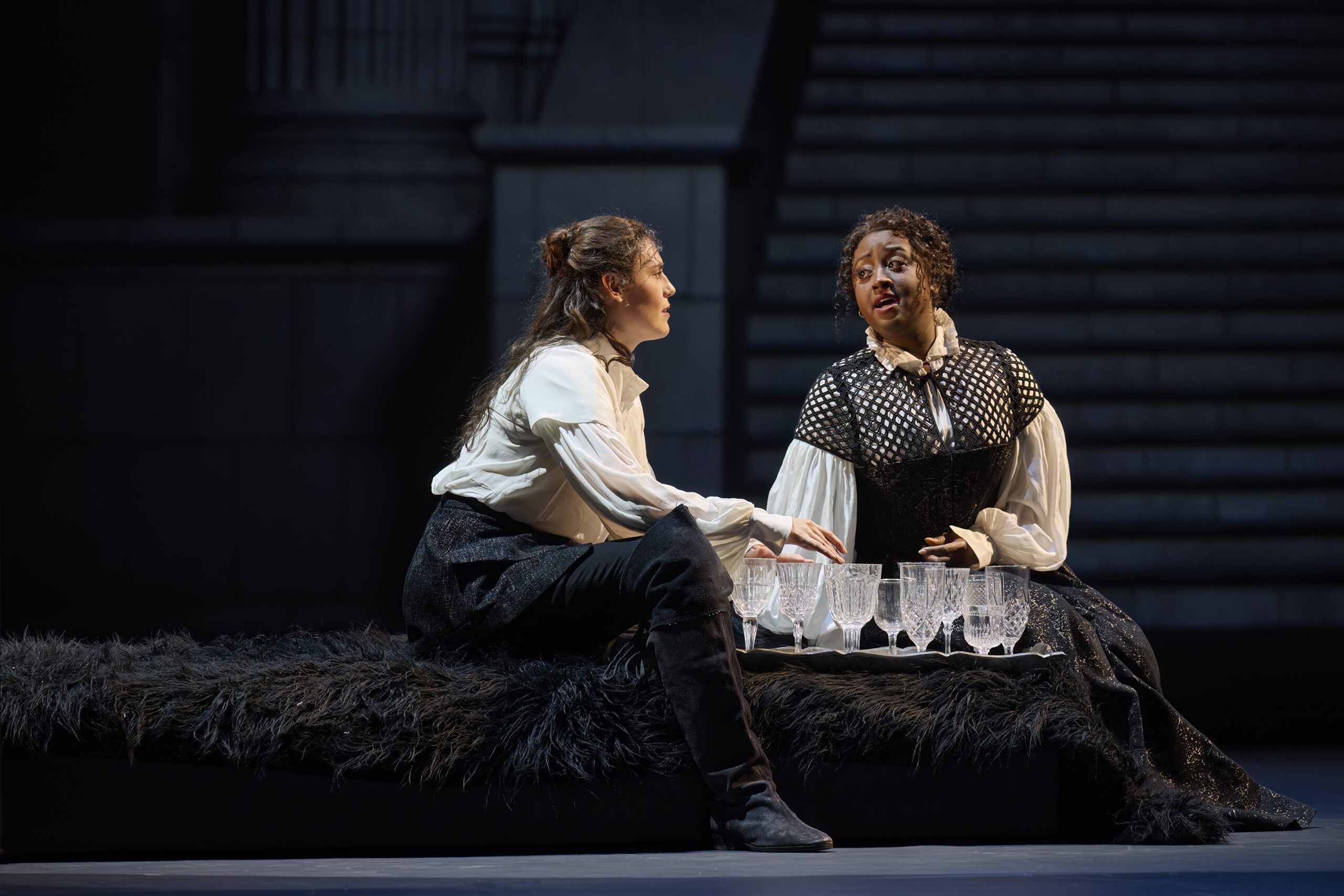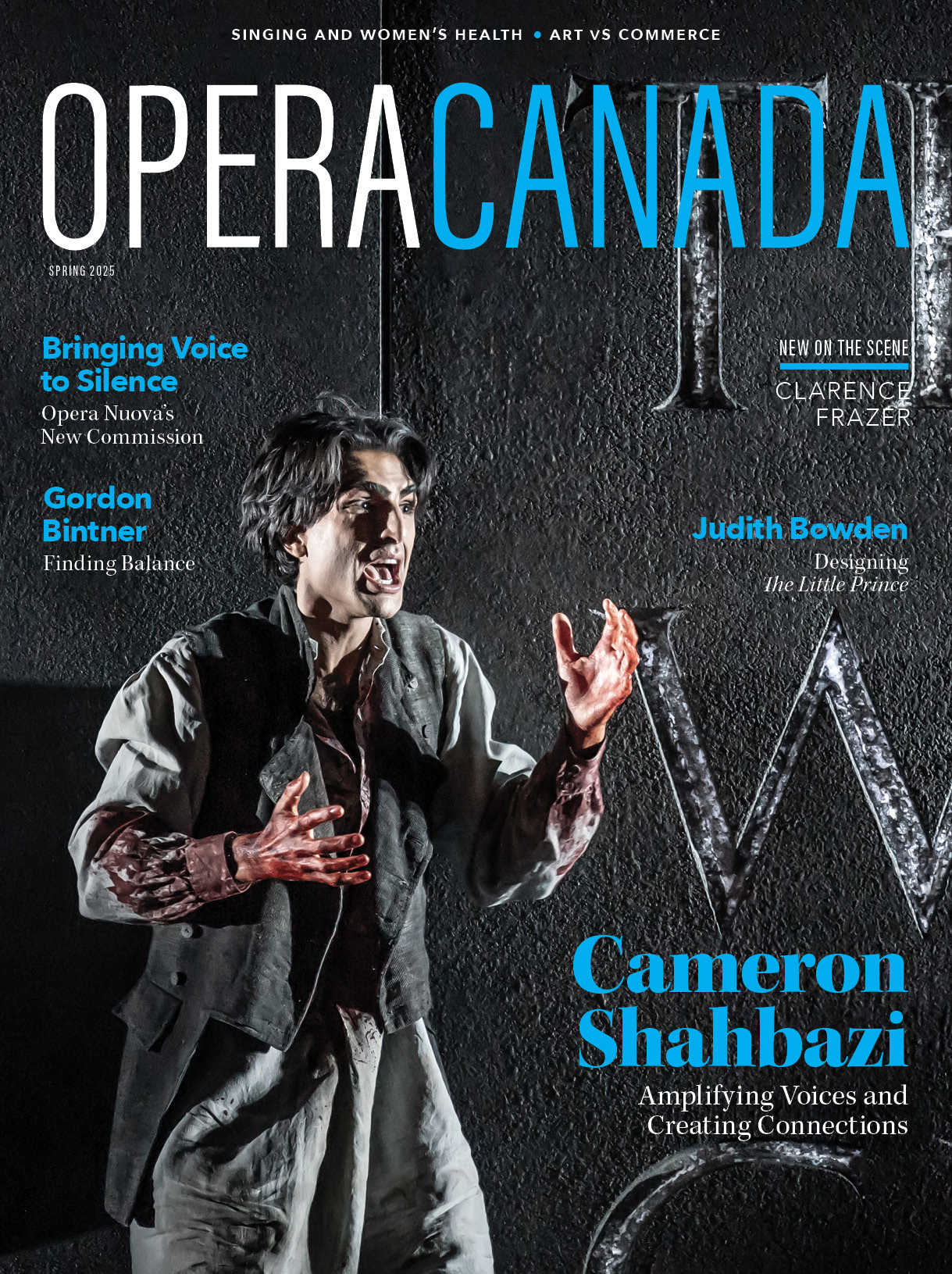Following the highly successful Puccini warhorse Madama Butterfly that opened the winter season at the Canadian Opera Company (COC) winter season, the company followed it with something entirely different, La Reine-garçon, a new opera and the first co-commission between Opéra de Montréal and the COC. It featured an excellent all-Canadian cast. Given the relatively conservative Canadian opera audience when it comes to new works, it was gratifying to witness the very enthusiastic ovation at the end.
La Reine-garçon is the brainchild of composer Julien Bilodeau and librettist Michel Marc Bouchard. Given the financial and artistic risks involved in developing new works, it’s a rare venture by the COC. In its last quarter century history, it has only created two new works – Randolph Peters’ The Golden Ass (1999), which to the best of my knowledge has never been revived, as well as the more successful Hadrian by Rufus Wainwright (2018).
The idea for the La Reine-garçon co-commission goes back to the tail end of Alexander Neef’s tenure as the COC general director. Its world premiere was warmly received exactly a year ago in Montreal, and now it’s Toronto’s turn. The libretto by Bouchard was inspired by his earlier play, Christine, la reine-garçon, which premiered in 2012. It’s based on a historical figure, the colourful 17th-century Swedish monarch, Queen Christina of Sweden.
For those unfamiliar with Queen Christina’s story, here is a super-brief précis. Raised as a boy by her father, Christina assumes the throne as the girl king. She’s urged to marry to produce an heir, but she is secretly in love with her lady in waiting, Countess Ebba Sparre, here sympathetically sung and acted by mezzo Queen Hezumuryango. Torn between duty and free will, Christina decides to be true to her own nature, rejecting all male suitors, turning away from Lutheranism in favour of Catholicism, and eventually abdicating her throne to her cousin Karl Gustav (baritone Phillipe Sly) and spending the rest of her life in Italy at the invitation of the Pope.
I asked COC Music Director Johannes Debus for his thoughts on this new work. He feels that it’s decidedly a masterpiece. “Bilodeau’s music mirrors the wide scope of the subject matter with a concept that I would describe as ‘grand opera.’ The music ranges from the wide lens and big paintbrush on a large canvas to the utmost intimacy, from stately proclamations to sounds and elements of nature and the expressions of personal emotions and struggles.”
“The music is never descriptive but always evocative, setting the tone and musical space in which the listener can connect with the drama on many levels and be inspired to have their own imaginations and emotional reactions and draw their own conclusions. This is what great art is about.”
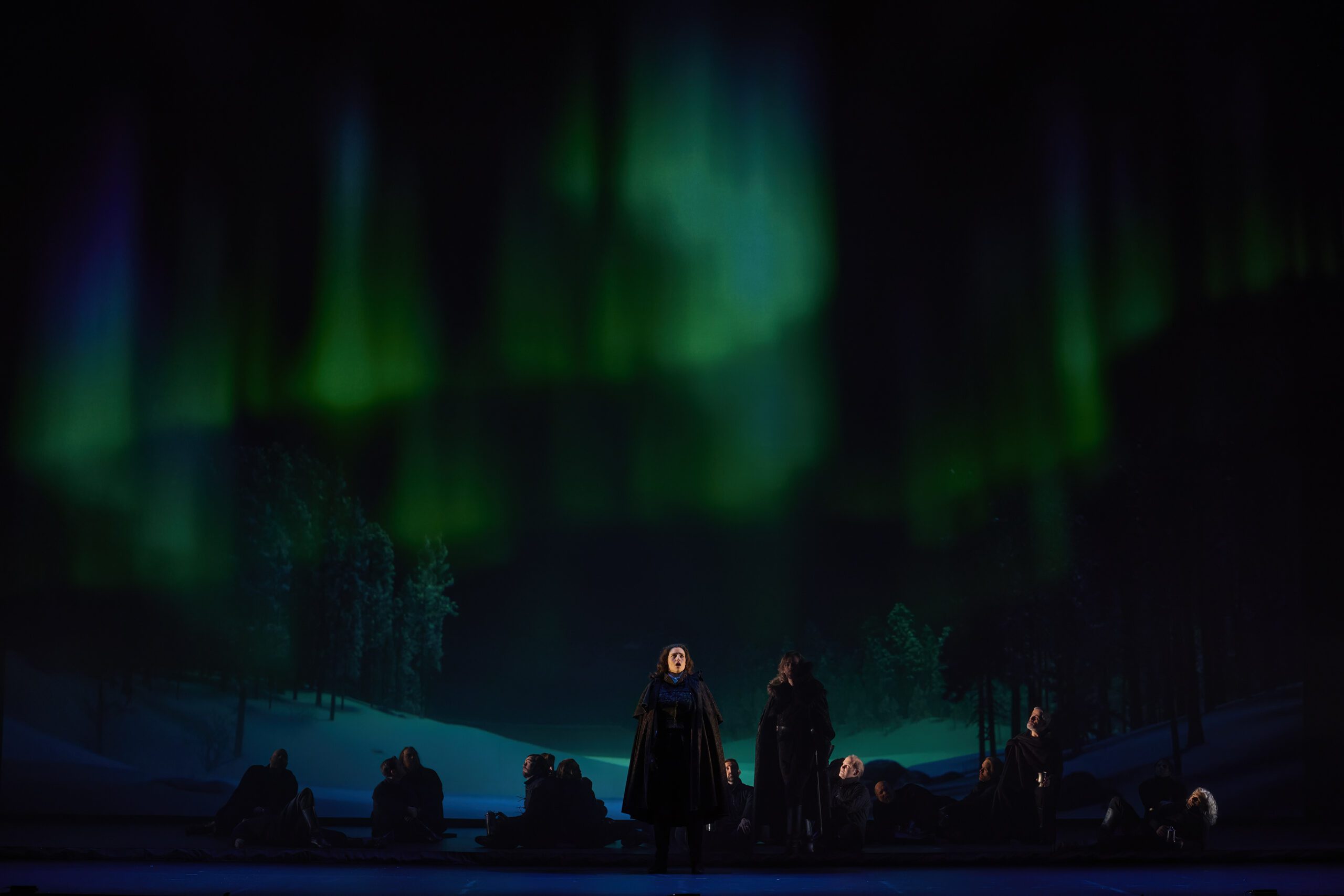
Photo Credit: Michael Cooper
The beauty of the Northern Lights in La Reine-garçon at the Canadian Opera Company
When asked what’s it like tackling a brand-new piece, Debus said it’s both daunting and satisfying. “The vocal writing is fantastic and very idiomatic, requiring singers of enormous vocal abilities and great personality. The same can be said of the demands for the orchestra. It is a substantial work, requiring stamina, technical prowess and musical imagination.”
Maestro Debus’s responses deepened my understanding and appreciation of this opera. To my eyes and ears as an audience member, I feel that Bilodeau and Bouchard have given us a unique and striking new work, with a score that’s tonally complex, rich, accessible, with wonderfully atmospheric and highly evocative moments, yet at the same time rooted in contemporary 21st-century musical sensibilities. As I left the opera house after the performance, I founded myself still under the spell of its exceptional score.
Kudos to set designer Anick La Bissionnière, lighting designer Eric Champoux and projection designer Alexandre Desjardins for creating a visual feast that beautifully illuminates the north country that is Sweden. The opening snowstorm scene was truly striking; the same is true for the visually spectacular aurora borealis projections in Act Two. The otherworldly sounds of the offstage herding calls, the Kulning Chant, marvellously executed by high soprano Anne-Marie Beaudette, added to the evocative atmosphere. Also striking was the scene involving an anatomy lesson, where philosopher and scientist Rene Descartes (tenor Owen McCausland) dissects the brain of a cadaver to extract the pineal gland, believed to be the seat of emotions.
Among the many highlights of the evening, I must single out the scene involving Marie-Eleonore de Brandenburg, the Queen Mother, stunningly sung and acted by coloratura soprano Aline Kutan. Her stratospheric cackling laughs are forever etched in the memory bank. It was later that I found out the role was written with Kutan in mind – Brava! Equally remarkable was tenor Isaiah Bell as the droll Count Johan Oxenstierna. He sang beautifully and fully embodied the comic side of this character, complete with his own, over-the-top choreography. Making a welcome return to the COC was Phillipe Sly as Count Karl Gustav, and it was good to have the long overdue debut of Canadian bass-baritone Daniel Okulitch as Axel Oxenstierna.
This opera, however, revolves around the title character, here wonderfully taken by Canadian soprano Kirsten MacKinnon, who last sang Fiordiligi at the COC in 2019. She was impressive then, but it didn’t prepare me for how her artistry has grown and the voice has gained in volume to match its inherent beauty. Christina has a huge amount of music to sing, some of it sits very high, but MacKinnon dispatched everything with lovely tone and dramatic acuity.
The choral writing in this opera is substantial, and the excellent COC chorus was fully up to the task, sounding wonderful in its moments in the spotlight. Debus led the musicians in a performance of both dramatic power and caressing lyricism. I had a great seat in front orchestra and was blown away by the torrents of sound coming from the pit. All in all, a very different experience from the Puccini a week earlier, yet one that’s equally memorable. Not to be missed.
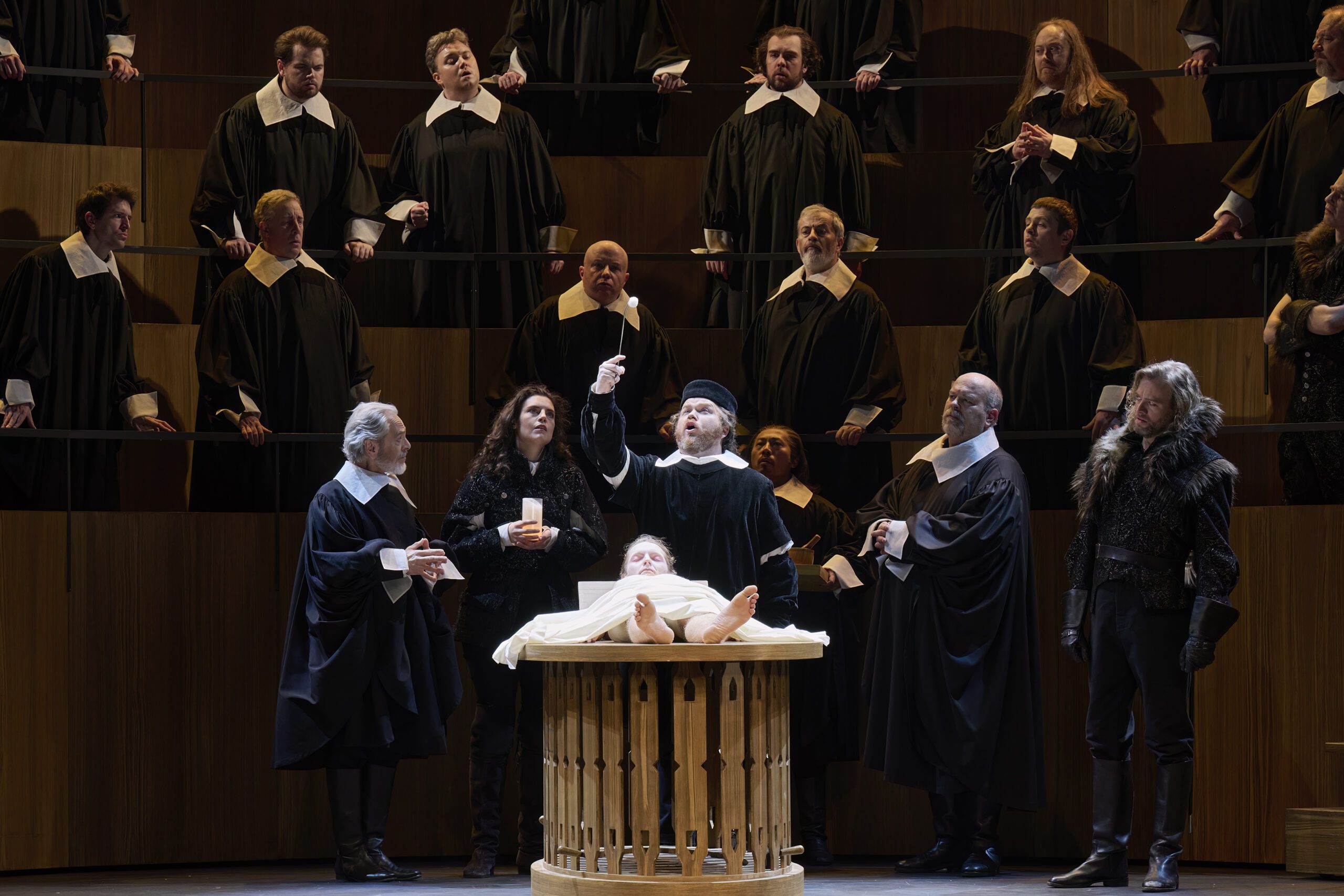
Photo Credit: Michael Cooper
Rene Descartes dissects a brain for the court of La Reine-garçon
Opera Canada depends on the generous contributions of its supporters to bring readers outstanding, in-depth coverage of opera in Canada and beyond. Please consider subscribing or donating today.
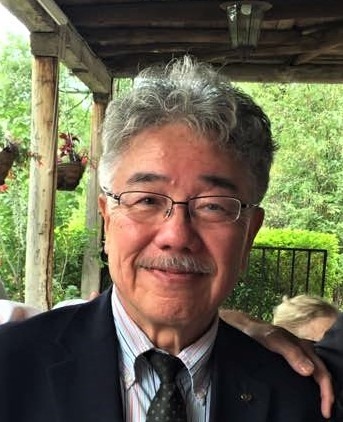
Joseph So is Professor Emeritus at Trent University. He is also a long-time contributor to La Scena Musicale and Opera (London, UK). His interest in music journalism focuses on voice, opera as well as symphonic and piano repertoires. He appears regularly as a panel member of the Big Canadian Opera Company Podcast. He has co-edited a book, Opera in a Multicultural World: Coloniality, Culture, Performance, published by Routledge (Taylor & Francis Group).

